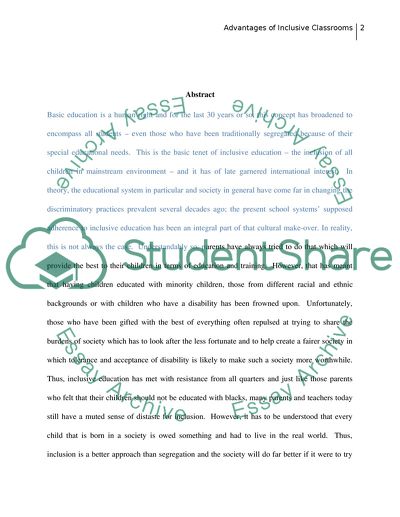Cite this document
(Perceptions of the Advantages of Inclusive Classrooms Research Proposal, n.d.)
Perceptions of the Advantages of Inclusive Classrooms Research Proposal. Retrieved from https://studentshare.org/education/1735117-parents-and-teachers-perceptions-of-the-advantages-of-inclusive-classrooms
Perceptions of the Advantages of Inclusive Classrooms Research Proposal. Retrieved from https://studentshare.org/education/1735117-parents-and-teachers-perceptions-of-the-advantages-of-inclusive-classrooms
(Perceptions of the Advantages of Inclusive Classrooms Research Proposal)
Perceptions of the Advantages of Inclusive Classrooms Research Proposal. https://studentshare.org/education/1735117-parents-and-teachers-perceptions-of-the-advantages-of-inclusive-classrooms.
Perceptions of the Advantages of Inclusive Classrooms Research Proposal. https://studentshare.org/education/1735117-parents-and-teachers-perceptions-of-the-advantages-of-inclusive-classrooms.
“Perceptions of the Advantages of Inclusive Classrooms Research Proposal”, n.d. https://studentshare.org/education/1735117-parents-and-teachers-perceptions-of-the-advantages-of-inclusive-classrooms.


